You could let the Image control within a panel such as StackPanel or Grid, and convert the panel which includes your rotated image to stream by using RenderTargetBitmap class.
Update:
The size of Grid will adapt to the size of the Image control and the size of Grid is always bigger than the size of the Image control if the image is rotated.
You could check the following code as a sample.
<Grid x:Name="panel">
<Image Source="Assets/YourImage.png" Width="300" Height="300"
x:Name="image" Margin="10">
<Image.RenderTransform>
<RotateTransform Angle="45" CenterX="150" CenterY="150"/>
</Image.RenderTransform>
</Image>
</Grid>
Code-behind
private async void button_Click(object sender, RoutedEventArgs e)
{
var renderShapeViewBitmap = new RenderTargetBitmap();
InMemoryRandomAccessStream renderedStream = new InMemoryRandomAccessStream();
await renderShapeViewBitmap.RenderAsync(panel);
BitmapEncoder encoder = await BitmapEncoder.CreateAsync(BitmapEncoder.PngEncoderId, renderedStream);
IBuffer pixelBuffer = await renderShapeViewBitmap.GetPixelsAsync();
encoder.SetPixelData(BitmapPixelFormat.Bgra8, BitmapAlphaMode.Premultiplied,
(uint)renderShapeViewBitmap.PixelWidth, (uint)renderShapeViewBitmap.PixelHeight,
96, 96, pixelBuffer.ToArray());
await encoder.FlushAsync();
renderedStream.Seek(0);
}
Update:
The image stream captured by RenderTargetBitmap with an Image control does not include the rotation information. Therefore, you cannot get the rotated image stream only.
You could check the following code as a workaround:
<Grid x:Name="panel" Background="Green" >
<Image Source="Assets/2211.png" Width="300"
x:Name="image" RenderTransformOrigin="0.5,0.5">
<Image.RenderTransform>
<RotateTransform Angle="45" CenterX="0" CenterY="0"/>
</Image.RenderTransform>
</Image>
</Grid>
Code-behind:
private async void button_Click(object sender, RoutedEventArgs e)
{
var width = panel.Width;
var height = panel.Height;
//We can calculate the grid’size based on the size of image. Change the size of grid to wrap the image, then capture the grid which just surrounds the image
panel.Height = image.ActualWidth / Math.Sqrt(2) + image.ActualHeight / Math.Sqrt(2);
panel.Width = image.ActualWidth / Math.Sqrt(2) + image.ActualHeight / Math.Sqrt(2);
var renderShapeViewBitmap = new RenderTargetBitmap();
InMemoryRandomAccessStream renderedStream = new InMemoryRandomAccessStream();
await renderShapeViewBitmap.RenderAsync(panel);
BitmapEncoder encoder = await BitmapEncoder.CreateAsync(BitmapEncoder.PngEncoderId, renderedStream);
IBuffer pixelBuffer = await renderShapeViewBitmap.GetPixelsAsync();
encoder.SetPixelData(BitmapPixelFormat.Bgra8, BitmapAlphaMode.Premultiplied,
(uint)renderShapeViewBitmap.PixelWidth, (uint)renderShapeViewBitmap.PixelHeight,
96, 96, pixelBuffer.ToArray());
await encoder.FlushAsync();
renderedStream.Seek(0);
……
//panel.Width = width; //If you want the panel to remain the original size, you can use the two line code.
//panel.Height = height;
}
Note, you need to rotate your image around its center with CenterX and CenterY as 0 and UIElement.RenderTransformOriginal as (0.5,0.5) for simple calculation.


